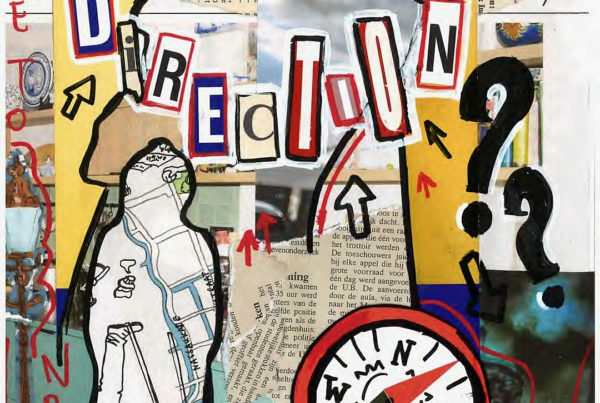
Goodbyes hurt. Someone leaving your life is often accompanied with feelings of pain and distress. Why is that? This article takes a closer look at underlying neurobiological processes, attachment, and the role of anxiety when we have to say goodbye to a loved one.
Goodbyes hurt. Someone leaving your life is often accompanied with feelings of pain and distress. Why is that? This article takes a closer look at underlying neurobiological processes, attachment, and the role of anxiety when we have to say goodbye to a loved one.

Photo by Julia Fiander on Unsplash

Photo by Julia Fiander on Unsplash
We knew all along that the moment would come where we’d have to say goodbye to each other. The past few hours were great as always: having coffee together at our favourite cafe, talking about the uneventful things that happened at work, or just sitting next to each other in the sun. As if the mundane moments were once again trying to prove how much I like you. But the closer we got to our goodbye the harder it was to push away the sadness that was closely tied to our upcoming separation. I held back the tears as we walked you to the train station. We were pretending as if everything was normal. Joking around, gossiping, and commenting on our surroundings. But the closer we got, the heavier my steps became and the lump in my throat became bigger and bigger. I knew as soon as we arrived at the platform I would have to say goodbye. And there we were at the platform, both crying.
I have had to say goodbye a lot of times in my life. May it be to a long distance partner going back home, a mentor when changing a job, or most recently to a friend who was moving away. Regardless of the emotional magnitude of these experiences, I always dreaded them. The feeling that I would have to leave that person for good made me feel anxious for hours or even days in advance. While I may be extremely sad and emotional, everyone copes with goodbyes differently. Some people ignore it and distract themselves, while others celebrate with a huge goodbye party. However we deal with it, it is a process that is a part of our life and that we all have to explore: leaving something behind, while often starting something anew. But what makes this common event so difficult to deal with?
When taking a closer look at the underlying neurobiological mechanisms, recent research revealed that psychological loss has an impact on brain functioning in rodents. When feeling deprived, molecular changes in the basolateral amygdala occur, a region linked to the processing of emotional stimuli and emotional adaptability (Smail et al., 2023). Translating this into behaviour, this would make it more difficult to deal with emotions. Therefore having to say goodbye to a friend at the train station might make me feel overwhelmed.
Furthermore, basolateral amygdala activity has been linked to unconscious anxiety (Etkin et al., 2004). The overwhelming anxiety I felt as my friend and I were about to part ways is thus a natural response. Separation anxiety is frequently expressed by losing security, the fear of developing a less intense relationship, worries about the other person being harmed, and even panic attacks as a result of separation (Manicavasaga et al., 1997).
“When looking into these different attachment styles, research has shown that people deal differently with losing someone they are attached to.”
According to Bowlby’s (1969) attachment theory, the first relationship we ever form (mostly the caregiver) serves as a schema for all the following relationships; a blueprint to how we form relationships. This schema is termed attachment style, of which there are four types:
- Secure Attachment: Comfortable with intimacy, can trust others, and is able to manage emotions effectively.
- Anxious Attachment: Seeks high levels of intimacy, fears abandonment, and seeks reassurance often.
- Dismissive Attachment: Emotionally distant, values independence, and avoids emotional intimacy.
- Disorganised Attachment: Combines elements of anxious and avoidant styles, desiring closeness but feeling uncomfortable or fearful in relationships.
When looking into these different attachment styles, research has shown that people deal differently with losing someone they are attached to. Although previous research is centred around bereavement, the concepts could also apply to goodbyes in general. It is known that effective coping plays a crucial role in how we deal with the loss of someone. The key is to switch between loss-oriented coping (focusing on the lost relationship, confronting and dwelling on loss) and restoration-oriented coping (focusing on new relationships, changing life to accommodate the loss) while also taking breaks from the process through distraction (Stroebe & Schut, 1999). So, after feeling anxious and sad about my friend leaving, it was important to concentrate on my other relationships. Seeking comfort and asking someone else to join me to my favourite cafe to discuss what happened at work.
“As important as these relationships are to our life, it is equally as important to properly say goodbye to them.”
Taking attachment styles into consideration, it has been shown that securely attached individuals deal well with loss and are able to oscillate between the different coping styles. On the other hand, anxiously attached individuals experience loss as too extreme, whereas dismissively attached individuals do not cope at all. This last response can lead to stages of chronic or complicated grief, which are long lasting and less controllable (Stroebe, 2002). As it becomes impossible to overcome the loss of someone, this can negatively affect physical and mental health (Shear, 2015)
To avoid this, it is important to have a well-rounded ending to your relationship, meaning that you’ve experienced it to the fullest and ended it with a sense of closure. Closure makes people feel happier, have less regrets, and transition into a new stage in life easier (Schwörer et al., 2020). So if you feel the need to throw a goodbye party, do it! If you’re gaining closure by having one last talk about the beautiful time you spent with the person leaving, go ahead! As important as these relationships are to our life, it is equally as important to properly say goodbye to them.
I hope that my friend is doing well in that other city. I also hope that most of you are able to experience a beautiful well-rounded ending like I did when I walked them to the train station. After all, it is okay to feel sad when saying goodbye to someone. It reminds us how much the other person means to us and that we shared a wonderful time together. And if we are being honest, goodbyes don’t have to be forever. Although we are now living different lives, I hope to see you soon my friend.
References
-
Bowlby, J. (1969). Attachment and loss. Vol. 1, Attachment. London: Hogarth Press.
-
Etkin, A., Klemenhagen, K. C., Dudman, J. T., Rogan, M. T., Hen, R., Kandel, E. R., & Hirsch, J. (2004). Individual differences in trait anxiety predict the response of the basolateral amygdala to unconsciously processed fearful faces. Neuron, 44(6), 1043-1055.
-
Manicavasaga, V., Silove, D., & Curtis, J. (1997). Separation anxiety in adulthood: a phenomenological investigation. Comprehensive Psychiatry, 38(5), 274-282.
-
Schwörer, B., Krott, N. R., & Oettingen, G. (2020). Saying goodbye and saying it well: Consequences of a (not) well-rounded ending. Motivation Science, 6(1), 21.
-
Shear, M. K. (2015). Complicated grief. New England Journal of Medicine, 372(2), 153-160.
-
Smail, M. A., Smith, B. L., Shukla, R., Alganem, K., Eby, H. M., Bollinger, J. L., … & Herman, J. P. (2023). Molecular neurobiology of loss: a role for basolateral amygdala extracellular matrix. Molecular Psychiatry, 1-13.
-
Stroebe, M. S. (2002). Paving the way: From early attachment theory to contemporary bereavement research. Mortality, 7(2), 127-138.
-
Stroebe, M. & Schut, H. (1999). The Dual Process Model of coping with bereavement: rationale and description. Death Studies, 23, 197–224.
We knew all along that the moment would come where we’d have to say goodbye to each other. The past few hours were great as always: having coffee together at our favourite cafe, talking about the uneventful things that happened at work, or just sitting next to each other in the sun. As if the mundane moments were once again trying to prove how much I like you. But the closer we got to our goodbye the harder it was to push away the sadness that was closely tied to our upcoming separation. I held back the tears as we walked you to the train station. We were pretending as if everything was normal. Joking around, gossiping, and commenting on our surroundings. But the closer we got, the heavier my steps became and the lump in my throat became bigger and bigger. I knew as soon as we arrived at the platform I would have to say goodbye. And there we were at the platform, both crying.
I have had to say goodbye a lot of times in my life. May it be to a long distance partner going back home, a mentor when changing a job, or most recently to a friend who was moving away. Regardless of the emotional magnitude of these experiences, I always dreaded them. The feeling that I would have to leave that person for good made me feel anxious for hours or even days in advance. While I may be extremely sad and emotional, everyone copes with goodbyes differently. Some people ignore it and distract themselves, while others celebrate with a huge goodbye party. However we deal with it, it is a process that is a part of our life and that we all have to explore: leaving something behind, while often starting something anew. But what makes this common event so difficult to deal with?
When taking a closer look at the underlying neurobiological mechanisms, recent research revealed that psychological loss has an impact on brain functioning in rodents. When feeling deprived, molecular changes in the basolateral amygdala occur, a region linked to the processing of emotional stimuli and emotional adaptability (Smail et al., 2023). Translating this into behaviour, this would make it more difficult to deal with emotions. Therefore having to say goodbye to a friend at the train station might make me feel overwhelmed.
Furthermore, basolateral amygdala activity has been linked to unconscious anxiety (Etkin et al., 2004). The overwhelming anxiety I felt as my friend and I were about to part ways is thus a natural response. Separation anxiety is frequently expressed by losing security, the fear of developing a less intense relationship, worries about the other person being harmed, and even panic attacks as a result of separation (Manicavasaga et al., 1997).
“When looking into these different attachment styles, research has shown that people deal differently with losing someone they are attached to.”
According to Bowlby’s (1969) attachment theory, the first relationship we ever form (mostly the caregiver) serves as a schema for all the following relationships; a blueprint to how we form relationships. This schema is termed attachment style, of which there are four types:
- Secure Attachment: Comfortable with intimacy, can trust others, and is able to manage emotions effectively.
- Anxious Attachment: Seeks high levels of intimacy, fears abandonment, and seeks reassurance often.
- Dismissive Attachment: Emotionally distant, values independence, and avoids emotional intimacy.
- Disorganised Attachment: Combines elements of anxious and avoidant styles, desiring closeness but feeling uncomfortable or fearful in relationships.
When looking into these different attachment styles, research has shown that people deal differently with losing someone they are attached to. Although previous research is centred around bereavement, the concepts could also apply to goodbyes in general. It is known that effective coping plays a crucial role in how we deal with the loss of someone. The key is to switch between loss-oriented coping (focusing on the lost relationship, confronting and dwelling on loss) and restoration-oriented coping (focusing on new relationships, changing life to accommodate the loss) while also taking breaks from the process through distraction (Stroebe & Schut, 1999). So, after feeling anxious and sad about my friend leaving, it was important to concentrate on my other relationships. Seeking comfort and asking someone else to join me to my favourite cafe to discuss what happened at work.
“As important as these relationships are to our life, it is equally as important to properly say goodbye to them.”
Taking attachment styles into consideration, it has been shown that securely attached individuals deal well with loss and are able to oscillate between the different coping styles. On the other hand, anxiously attached individuals experience loss as too extreme, whereas dismissively attached individuals do not cope at all. This last response can lead to stages of chronic or complicated grief, which are long lasting and less controllable (Stroebe, 2002). As it becomes impossible to overcome the loss of someone, this can negatively affect physical and mental health (Shear, 2015)
To avoid this, it is important to have a well-rounded ending to your relationship, meaning that you’ve experienced it to the fullest and ended it with a sense of closure. Closure makes people feel happier, have less regrets, and transition into a new stage in life easier (Schwörer et al., 2020). So if you feel the need to throw a goodbye party, do it! If you’re gaining closure by having one last talk about the beautiful time you spent with the person leaving, go ahead! As important as these relationships are to our life, it is equally as important to properly say goodbye to them.
I hope that my friend is doing well in that other city. I also hope that most of you are able to experience a beautiful well-rounded ending like I did when I walked them to the train station. After all, it is okay to feel sad when saying goodbye to someone. It reminds us how much the other person means to us and that we shared a wonderful time together. And if we are being honest, goodbyes don’t have to be forever. Although we are now living different lives, I hope to see you soon my friend.
References
-
Bowlby, J. (1969). Attachment and loss. Vol. 1, Attachment. London: Hogarth Press.
-
Etkin, A., Klemenhagen, K. C., Dudman, J. T., Rogan, M. T., Hen, R., Kandel, E. R., & Hirsch, J. (2004). Individual differences in trait anxiety predict the response of the basolateral amygdala to unconsciously processed fearful faces. Neuron, 44(6), 1043-1055.
-
Manicavasaga, V., Silove, D., & Curtis, J. (1997). Separation anxiety in adulthood: a phenomenological investigation. Comprehensive Psychiatry, 38(5), 274-282.
-
Schwörer, B., Krott, N. R., & Oettingen, G. (2020). Saying goodbye and saying it well: Consequences of a (not) well-rounded ending. Motivation Science, 6(1), 21.
-
Shear, M. K. (2015). Complicated grief. New England Journal of Medicine, 372(2), 153-160.
-
Smail, M. A., Smith, B. L., Shukla, R., Alganem, K., Eby, H. M., Bollinger, J. L., … & Herman, J. P. (2023). Molecular neurobiology of loss: a role for basolateral amygdala extracellular matrix. Molecular Psychiatry, 1-13.
-
Stroebe, M. S. (2002). Paving the way: From early attachment theory to contemporary bereavement research. Mortality, 7(2), 127-138.
-
Stroebe, M. & Schut, H. (1999). The Dual Process Model of coping with bereavement: rationale and description. Death Studies, 23, 197–224.



